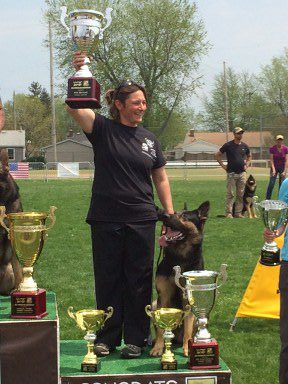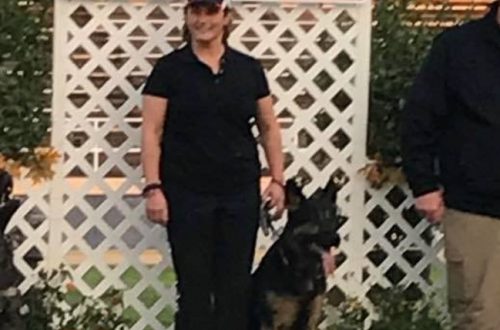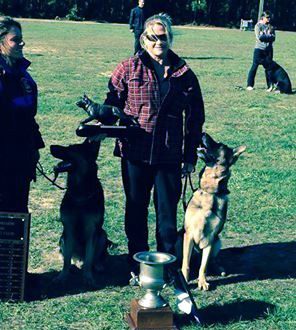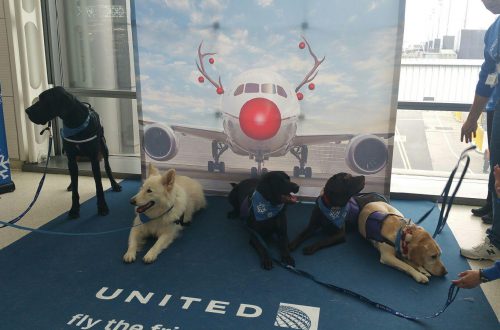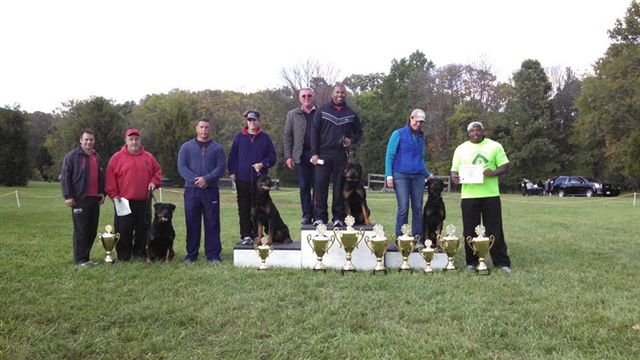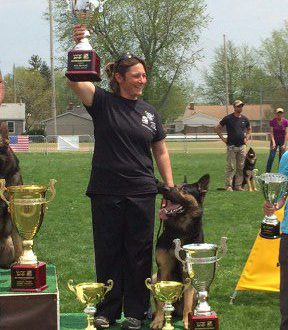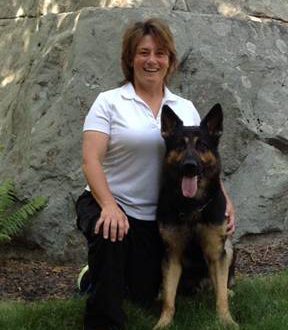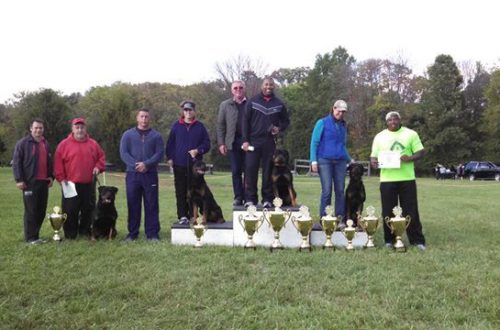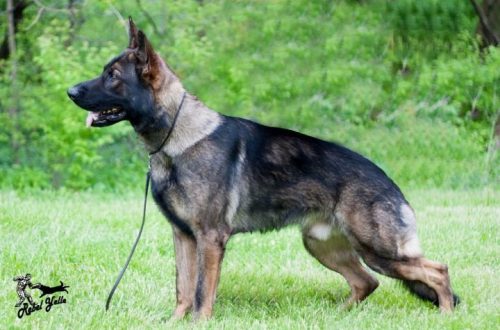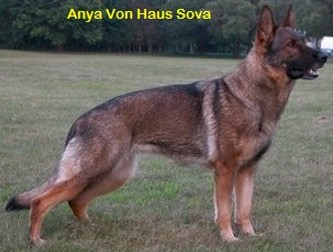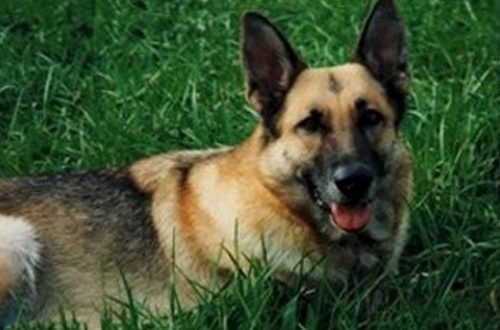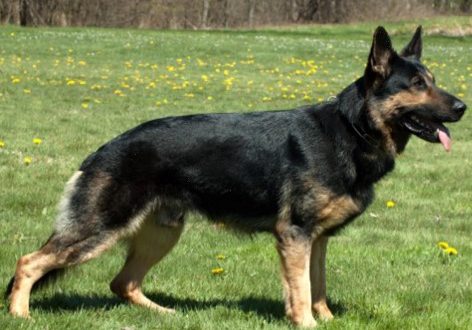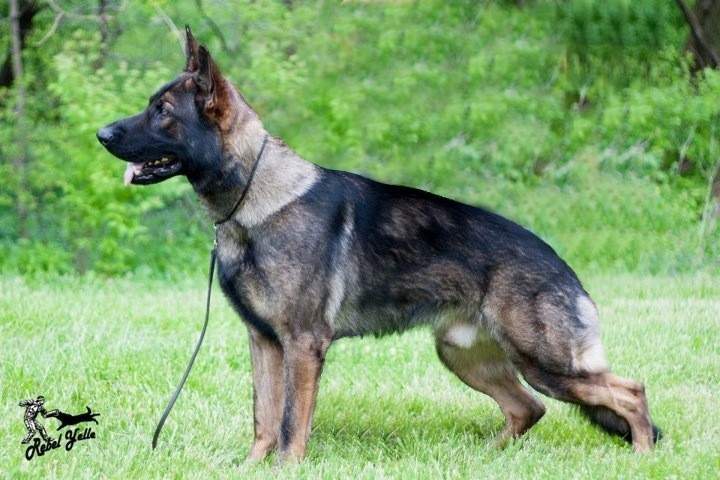-
Congratulations Beth & Fyte on their IPO 3
Congratulations to Beth and Fyte on obtaining Fyte’s IPO 3(88, 96, 97)Fyte is just 22 months old! 2nd Place HOT3rd Place IPO3High ProtectionHelpers Favorite Dog 2015 Working Dog ChampionshipsBuffalo, NY
-
Congratulations to Dave Martin and Kingston 2014 Rottweiler Nationals Champion.
Dave also got High in Trial, High Obedience and High Protection.I’m honored to be a part of King’s training program from start to National Champion!
-
Congratulations to Laurie Schweizer and Remy.
Remy came in 8th place at the 2014 Northeast Regional Championship and was the Highest Scoring Breed Surveyed dog at the Event. I’m very proud to be a part of this team from the start. Very proud to say that Laurie and I won the Regional Club Trophy at the2014 Northeast Regional Championship.
-
Nathan Vom Fegelhof Sch3, FH2, 2012 FH Champion
DOB: 3/29/2003 (sadly, Nate passed July 27, 2014) BH, AD, SchH3, FH2, IPO 3KK1 SG Conformation Rating“a” normal – Hips and ElbowsOFA DM Test – Negative and normal genes Nate is 12 times ScH 3 2012 FH Champions — Mid Ohio Working Dog Championship – Score 98 Points 2011Greater Philadelphia Schutzhund Club, FH2, 96pts.2010 Upper Bucks Schutzhund Club FH, 90 points2009 FCI World Team Competitor Schwanenstadt, Austria2009 AWDF Championship 9th Place2009 AWDF Championship High Female Handler2009 USA Working Dog Championship 11th Place2008 AWDF Championship 5th Place2008 North East Regional 3rd Place2008 North East Regional High Track and 3rd Place2007 North Est Regional 5th Place2006 Greater Philadelphia Sch Club: Schutzhund 3…
-
Anya Von Haus Sova
DOB: 3/19/1999 SCH3, IPO 3, FH, KK2Life SG Conformation RatingHips: “a” normal Germany 11 x’s ScH310 x’s ScH3 at National, International and Regional Championships2 x’s High in Trial2003 World Team Competitor, Wavre Belgium7 x’s High Scoring Female Dog North East Regional High Female Dog in 2006, 2005, 2003 North American Championships High Female Dog in 2004, 2003 2002 National German Shepherd Championships High Female Dog #1 Schutzhund 3 Female 2002 AWDF World Qualifier Championship High Female Dog 2006 2006 North East Regional Championship High Track Competition Record SchH1 11.18.01- 288 V (Excellent )Trial hosted by Schafferfund Schutzhund Club96 Tracking, 94 Obedience, 98 Protection.High ScH1 | High in Trial SchH2 12.2.2001-…
-
MYSTICAL MEDUSA V. AXION
7/17/1995 – 11/3/2008Rest In Peace Dear Companion Medusa placed #9th & #13th in the Utility and Open Division in the 1998 German Shepherd Obedience Ranking System (The German Shepherd Review October 1999 Issue). June 1999: Super Utility Dog AwardFront & Finish MagazineVolume XXVIII, Number 9November 1998:Utility Dog Excellent10 shows – 20 legsJune 1998: Utility DogChamberburg Area Kennel Club – Fourth Prize – 4/10/98Taconic Hills Kennel Club – First Prize – 5/5/98Greenwich Kennel Club – First Prize – 6/6/98October 1997:Companion Dog ExcellentNew Brunswick Kennel Club – First Prize – 8/29/97Morris Hills Dog Training Club – Third Prize – 8/31/97South Jersey Kennel Club – First Prize – 10/19/97May 1997:Companion DogStaten Island Dog…
-
Dre, BH FH1
DOB: 2/17/2010 “a” normal hips & elbows Dre is sired by Beth’s dog Nathan vom Fegelhof and already displays Nate’s drive and eagerness to please. Dre has incredible food and prey drive, as well as, power and courage.
-
Puppy Play
Your puppy needs exercise and interaction with you. Playing with your pup is vital to his physical and mental development. However, because a pup’s body is growing and changing, certain types of “play” activities should be avoided. Different dog breeds and mixes of breeds have different energy levels and rates of growth; the growth plates in their joints close at different ages. Sustained vigorous running and jumping (even off the couch) can cause damage during the growth period. Focus instead on play that expends mental and physical energy without placing undue stress on your pup’s developing body. Provide at least three structured play sessions per day and allow (or teach) your pup to rest in between. Safety First Don’t…
-
Mouthing
One of the most common issues raised in my puppy classes is “mouthing.” Like many puppy behaviors, mouthing is rooted in canine instinct. It is not inherently “bad” but like many instinctive behaviors it can become problematic in a dog sharing its life with humans. In the wild, the other members of the pack would teach a pup if and when the behavior is useful or appropriate. In the home, it is up to us to teach our pups how to channel and control their behaviors in acceptable ways. You cannot allow your pup to mouth just because it is “natural.” Humans and dogs made that trade-off generations ago when dogs domesticated. Some natural and instinctive behaviors had to…
-
Stubborn, Scared or Stupid?
Puppies have a way of pulling on our heartstrings and pulling on our common sense. Their cuteness overrides logic and we bring into our homes an animal that leaks, whines, chews, and generally turns our lives upside down. And in the chaos that ensues, we maintain our sanity by clinging to the knowledge that it won’t always be like this. Eventually, out pups will learn manners and good behavior and we can enjoy loving them and having them in our lives. Pups don’t just “outgrow” most of their more challenging behaviors. The skills required for living with people don’t come naturally to them. Housebreaking, leash walking, and spending periods of the day alone are not…
